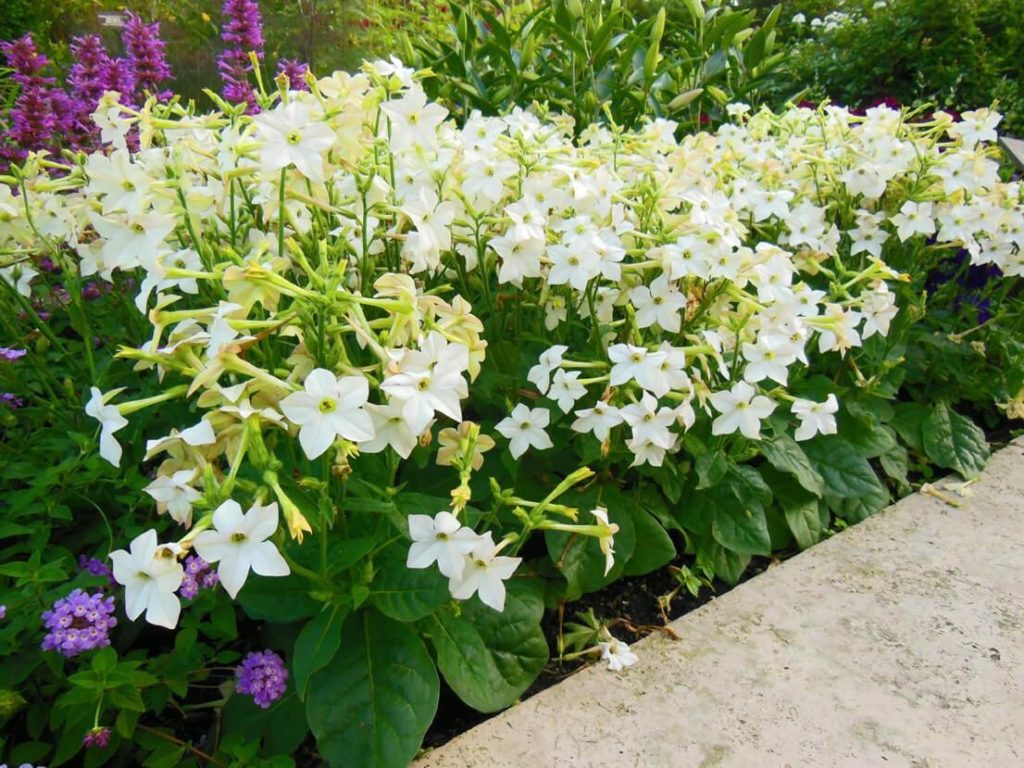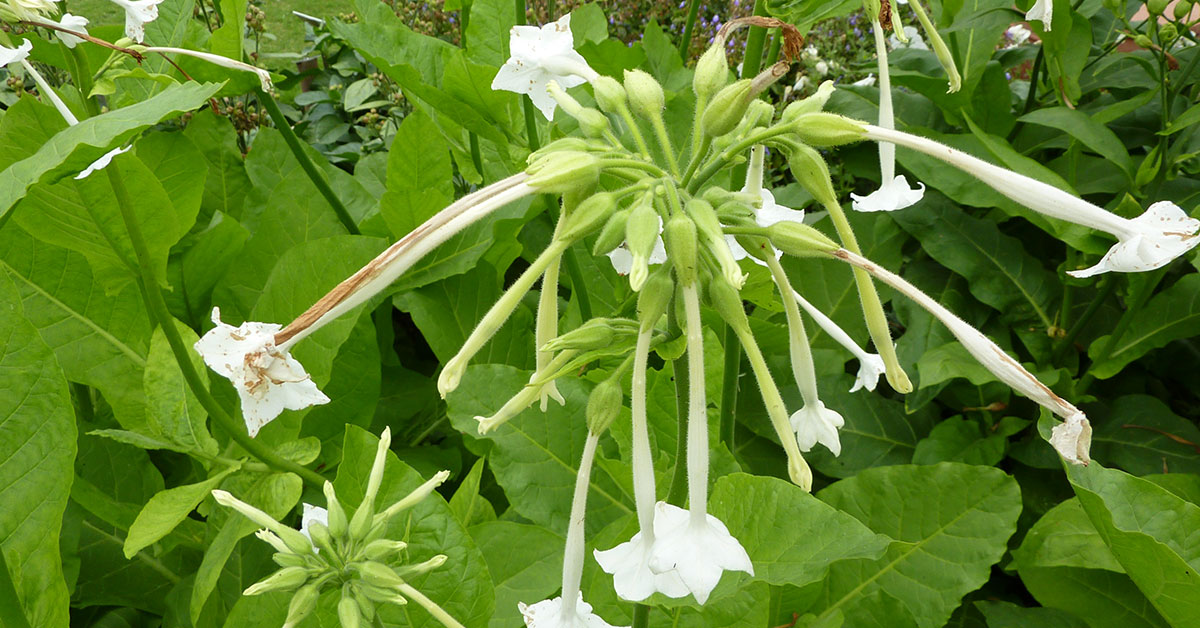Flowering Tobacco is a stunning decorative plant that is indigenous to Colombia, Paraguay, Uruguay, southern Brazil, and northern Argentina. It will give color and a pleasant scent to your yard. It has flower stalks adorned with clusters of blossoms and fuzzy, sticky leaves. The blooms of the majority of types, which appear in the summer and early fall, open in the evening or at night and fill the environment with their intense sweet perfume, luring daytime pollinators like hummingbirds and nighttime pollinators like moths.
Growing The Flowering Tobacco
Flowering tobacco is a delicate perennial that can survive a moderate winter in the state and spread their seeds wherever they are planted. For their smell, which is particularly noticeable in the evening, Nicotiana alata, N. sylvestris, and a few other species are frequently planted. Although both species feature white flowers, colorful varieties are also common. White, pink, crimson, lime green, scarlet, and mauve tubular blooms with branched stalks bloom throughout the summer.
Here are some brief facts about the popular aesthetic plant:
- Latin name: Nicotiana alata
- Other names: sweet tobacco, jasmine tobacco, winged tobacco
- Native to: South America
- Invasiveness: No
- Tenderness: Herbaceous Perennial
- Sun: Full Sun
- Water: Water daily
- Soil: Moist, well-drained
- Hardiness zone: Zones 10 through 11
- When to plant: Early spring
- Spacing: 12-18″
- Plant height: 3-5 ft
- Bloom period: Summer, fall
- Time to maturity: 3 to 6 weeks
- Container friendly: Yes
- Fertilizer: Balanced fertilizer
- Toxicity: Toxic to humans and pets
- Deer resistant: Yes
- Pest resistant: No
The two most frequent reasons why flowering tobacco does not bloom are lack of light or water. Container-grown plants are simple to relocate to a more sunny location. The plant’s big, coarse, sticky foliage is reminiscent of commercial tobacco, to which it is related. From seed placed directly into the soil or as transplants, new plants can be simply started.
Water
Water this plant whenever the top inch of soil feels dry because it prefers dependably moist soil. For brief periods, established plants may endure drought conditions.
Sunlight
Plant Flowering Tobacco in broad sun to partial shade.
On most days, there should be at least 6 hours of sunlight. In really hot locations, give your plants protection from the blazing afternoon sun.
Soil
As long as there is adequate drainage, flowering tobacco can withstand a variety of soils and a wide pH range (6.1 to 7.8). It favors soil with a lot of organic materials.
Fertilizing
Flowering tobacco prefers rich soil because it enables it to produce the best bloom display. Use a balanced organic fertilizer right away after planting to feed your plants. Then, continue feeding each month through the growing season, which lasts from the beginning of summer until the first fall frost.

Invasiveness
The majority of Nicotianas self-sow once established. Although they are not invasive, the seedlings need to be severely thinned. Trim once at tulip and again in early June.
Growing The Flowering Tobacco In Containers
In order to enjoy the fragrant blossoms on your deck or patio at night, blooming tobacco kinds that are smaller and more compact are ideal for container gardening. One-quart containers are frequently used to sell plants. So that they have sufficient room to expand until the season comes to an end without needing to be replanted, transplant them into a 1-gallon container.
To keep the ground evenly moist while growing tobacco in containers, more regular watering is required. On scorching summer days, this may occur every day.
Care & Tips
In cold areas, flowering tobacco isn’t really winter resistant. Since it is often planted as an annual that is removed at the end of the growing season, the issue of overwintering is not present. Avoid planting close to other nightshade plants since they may spread the tobacco mosaic virus. They can sometimes draw aphids and snails.
Additionally, these plants don’t have a lot of major disease issues, but the tobacco mosaic virus can still affect them. The illness may result in yellowing of the foliage and restricted growth.
Common Problems
The two most dangerous pests of blooming tobacco plants are flea beetles and tobacco hornworms. Numerous tiny holes in the leaves, caused by flea beetle damage, are visible. Additionally, diatomaceous earth is a powerful organic flea beetle repellent.
Propagating Flowering Tobacco
5 to 6 weeks prior to your typical last frost date, sow the seeds. Because they need light to sprout, lightly press the seeds into the potting mix-filled pots and only lightly cover them with soil.
Maintain the pots at 72 to 78 degrees Fahrenheit in a light area. Make sure the soil is consistently moist. Once the seedlings have emerged, which can take up to two weeks, you may need to augment the natural indoor light with growth lights because they require a lot of sunshine. After the last frost, harden off the seedlings and move them outside.
The History Of The Flowering Tobacco
Native to the Americas, Australia, Southwestern Africa, and the South Pacific, Nicotiana is a genus of herbaceous shrubs and plants of the Solanaceae family. There have been a lot of dwarf kinds that bloom on short stems in recent years. Although the more compact varieties are excellent for large-scale color displays, they typically lack the older, larger-growing varieties’ distinctive scent.
Uses For The Flowering Tobacco
People usually grow Petunia for decorative purposes. Smoking is not the intended use.
For these plants to flourish, warm weather and soil are essential. Springtime soil that is cold and wet can promote fungal diseases and other problems. Apart from that, it is a relatively simple plant to grow that works well as a container annual.













